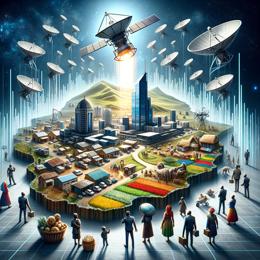Picture: for illustration purposes
South African Hospitality Industry Shows Signs of Recovery According to StatsSA
South Africa’s hospitality industry is steadily gaining momentum according to the latest findings from Statistics South Africa (StatsSA). The report, released on World Tourism Day, 27th September 2023, reveals an increased hotel occupancy rate of 47.3% in July 2023, up from 45.8% in June, and 45.5% in May. This steady increase reflects the industry's resilience and adaptability despite recent challenging times.
In addition, the total nominal income for the tourist accommodation industry in July 2023 was up by 17.8% as compared to July 2022, which suggests a return of consumer confidence in travel and hospitality. A driving factor for this rise was a notable 29.1% year-on-year increase in income from accommodation in July 2023, underpinned by a 7.5% increase in the number of stay unit nights sold and a 20.1% increase in the average income per stay unit night sold.
StatsSA also reported increases in income from accommodation in hotels, contributing 18.7 percentage points, and in 'other’ accommodation adding 10.7 percentage points. Despite this positive trend, seasonally adjusted income from accommodation saw a minimal decrease of 1.4% month-on-month in July 2023 after an increase of 4.5% the previous month.
Deputy Minister of Tourism, Fish Mahlalela, joining the World Tourism Day celebrations, highlighted the promising recovery of international travel. From January to July 2023, South Africa welcomed 4.8 million international tourists, marking a remarkable 70.6% increase from the same period in 2022. However, these figures are still 19.0% behind pre-pandemic levels of 2019, calling for cautious optimism.
In light of these statistics, Mahlalela reaffirmed that South Africa remains a favored travel destination, with the African region being the largest contributor to these arrivals, while Europe accounted for a significant 14.3% share. This trend represents South Africa's continued attraction for international tourists, with its rich cultural heritage, diverse landscapes, and unique wildlife being key drivers.










